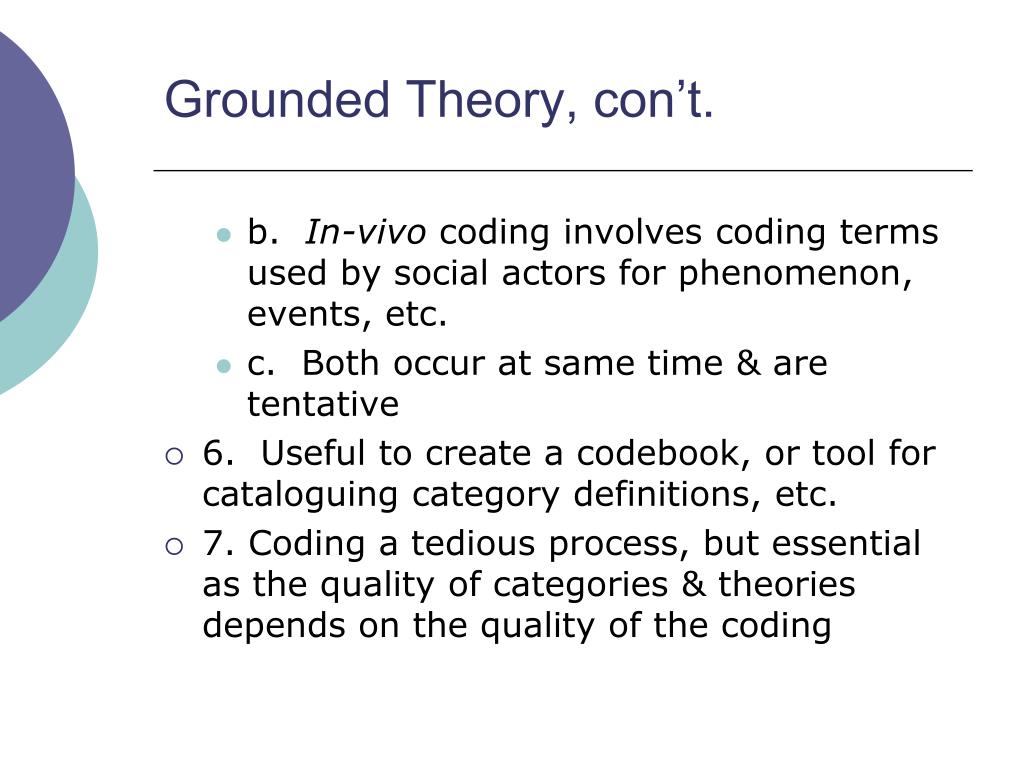


Qualitative research, including GT, has been devalued in the more conservative model of EBM. The traditional model of evidence-based medicine (EBM) promotes the use of quantitative research and has emphasised that tests have a hierarchy in which qualitative or mixed methods research is not considered among other characteristics, EBM places the emphasis on measurability, quantity and external validity. 5Ī review of publications in the medical field using the PubMed search engine revealed that there is scant literature on the use of this method, despite the fact that it emerged from medical sociology, has been available for some time and that further developments have been made since its inception for example, we found only nine articles on diabetes, five on depression, eight on schizophrenia, seven on dementia and none on euthanasia (PubMed). 1Īs a theory, GT leads to a final product (explanation or theory) with an explanatory framework to understand the phenomenon studied, in an ordered and constant process of comparison, analysis and coding. The most important property of the conceptualisation in GT is its abstraction of time, place and person, which it transcends without this consideration, there can be no integrated theory based on conceptual and hypothetical relationships. 2 GT is also considered a form of latent structure analysis which reveals fundamental patterns in an area. The method begins, but does not end, with inductive inquiry it is a comparative, iterative and interactive method. GT is a method of data gathering and analysis to develop middle-range theories. In GT, data from any research method and source can be used, be it a clinical experiment, survey or content analysis, etc., without being linked to them it transcends descriptive methods and their limitations, such as the search for accurate data, interpretation and how data are constructed. The investigator acts as a witness, regardless of their previous assumptions or expectations for the analysis although one of the trends with a social constructionist vision of GT establishes that the role of the researcher is not limited to being a witness, since a particular understanding of the phenomenon under investigation is constructed, meaning that for this trend it is impossible to capture social “reality” as it is a social construction of reality in itself.
#GROUNDED THEORY QUALITATIVE RESEARCH FREE#
4 It maintains an approach free of prejudices and preconceptions and produces the knowledge that lies in and emerges from the data. 3Īccording to Glaser, “GT is what it is, not what it should or could be”. 2 The discovery of GT is the most cited qualitative research reference. GT is both a method of studying processes and a method in process. This method is designed to generate concepts and theories which are grounded in data, 1 hence its name.


Grounded theory (GT) is a qualitative research method that searches data for emerging conceptualisations in integrated and categorised patterns, analysing, through rigorous steps, in a process of constant comparison.


 0 kommentar(er)
0 kommentar(er)
